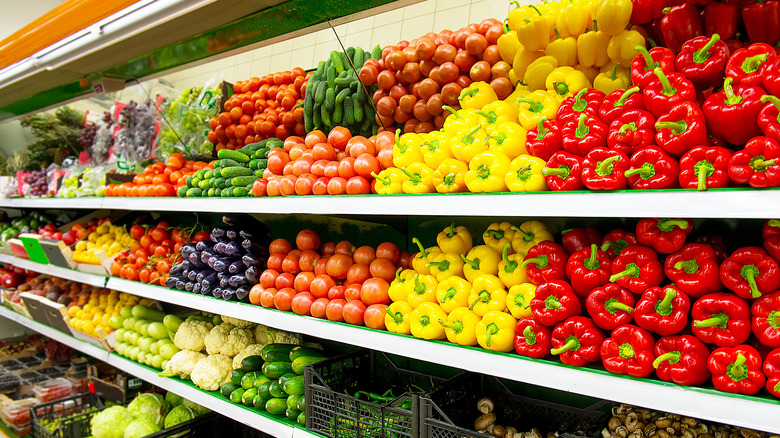New Data Shows Drought Is Having A Drastic Effect On Veggie Prices
While there's been talk about rising Thanksgiving turkey costs and drastic increases in egg prices, some hoped that relief from food inflation was on the horizon. In November the U.S. Bureau of Labor Statistics published its Consumer Price Index News Release, citing a rise of only .4% in the category of "food at home" costs. However, numbers for November paint a bleak picture for those hoping that food inflation would come to a halt.
Published in early December, the organization's Economic News Release seemed to show an improvement regarding turkeys with only a .5% increase over last month, while eggs continued to rise dramatically, seeing a 26% increase over last month and a staggering 244.1% increase from November of 2021. However, a new category is also emerging as a growing concern. The organization's report reveals a 38.1% increase from October to November of this year in the category of "fresh and dry vegetables" and a whopping 80.6% increase in the same category for the time period ranging from November 2021 to November 2022.
According to Gizmodo, climate change — and specifically the historic ongoing drought in the Southwestern United States — is to blame for skyrocketing vegetable costs. BBC reported earlier this year that the western portion of the country had not seen such a drastic drought since about A.D. 800. As a result of the reduced water supply in the region, farmers are planting fewer crops as well as changing the crops that they do plant (per Fox Weather).
How climate change is affecting vegetable prices
The California Department of Food and Agriculture reports that over 30% of U.S. vegetables are grown in California. The nation also relies on the state for 75% of its nuts and fruits. With some of California's farmers fallowing up to 30% of their land or transitioning to planting less thirsty crops, price increases for consumers have appeared inevitable for some time (per Reuters). "I don't think you'll see a shortage in the stores. I think you are going to have a higher price, though," California tomato farmer Tom Muller told Fox Weather in August of this year.
Meanwhile, Arizona (which holds the rank of fourth as a producer of fruits and vegetables in the U.S., per GlobalTrade) is facing a drought-related crisis as water levels continue to fall to historically low levels (via Washington Post). Ceres reports that 80% of the Colorado River's water is used for agricultural purposes while Visit Yuma notes that Arizona's Yuma County is involved with 90% of leafy winter vegetables produced nationwide. With historic water cuts of up to 25% enacted in an attempt to counteract the Colorado River's depletion, it was inevitable that farmers and production would be affected (via Vox).
While conservation efforts and modernization of farming techniques may help to ease these issues in the long run, in the short term it looks like consumers will quite literally be paying for climate change at the grocery store.

